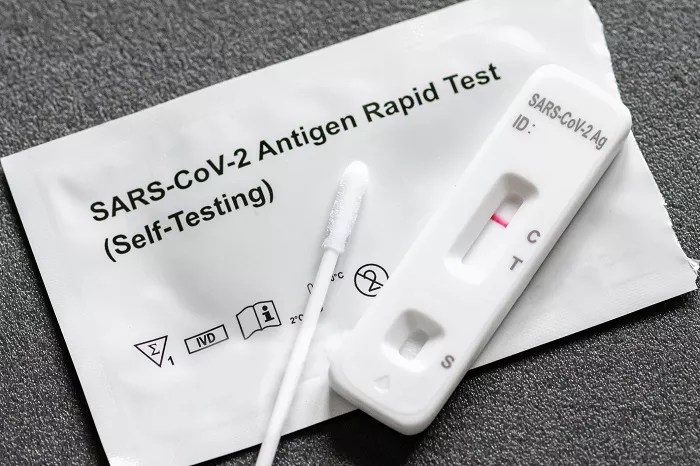Low-impact High-Intensity Interval Training (HIIT) has gained popularity in recent years due to its effectiveness in burning calories, improving cardiovascular health, and toning muscles—all without putting excessive stress on the joints. This makes it a great option for those who are new to exercise, recovering from injuries, or prefer less-intense workouts. But how many calories does low-impact HIIT actually burn? In this article, we will dive deep into the science behind low-impact HIIT, the factors that influence calorie burn, and how you can incorporate it into your fitness routine for optimal results.
What is Low-Impact HIIT?
To understand how many calories you can burn with low-impact HIIT, it’s important to first understand what it is. HIIT is a form of cardiovascular exercise that alternates between short bursts of intense activity followed by a brief period of rest or low-intensity exercise. The key to its effectiveness lies in the intensity of these intervals, which can continue to elevate your heart rate long after the workout has ended, promoting fat loss and cardiovascular benefits.
Low-impact HIIT, on the other hand, is a variation of this style of training that focuses on minimizing joint stress. Unlike traditional HIIT, which may involve high-impact movements such as jumping or running, low-impact HIIT incorporates exercises that are gentler on the knees, hips, and ankles. This is particularly helpful for individuals who may have joint pain, are overweight, or are recovering from an injury.
Exercises in low-impact HIIT might include movements like bodyweight squats, lunges, cycling, or using equipment like a rowing machine, elliptical, or resistance bands.
Factors Influencing Calorie Burn in Low-Impact HIIT
Several factors contribute to how many calories are burned during a low-impact HIIT session. While it is difficult to give an exact figure for every individual, understanding the factors that influence calorie expenditure will help you get a better idea of how much you may burn during your workouts.
1. Duration of the Workout
The longer you exercise, the more calories you will burn. Typically, low-impact HIIT sessions last between 20 and 45 minutes, with work intervals ranging from 20 to 60 seconds, followed by rest periods of 10 to 30 seconds. The total workout time, as well as the ratio of work to rest, plays a significant role in how many calories you burn. A longer workout with more work intervals will generally result in a higher total calorie burn.
2. Intensity of the Workout
The intensity of the intervals plays a crucial role in calorie burn. Although low-impact exercises are easier on the joints, they can still be performed at a high intensity, which increases the energy expenditure during the workout. For example, you may use the rowing machine at a moderate pace for one interval and then increase your speed or resistance for the next. This intensity variation ensures that your heart rate stays elevated throughout the workout, promoting fat burning.
3. Your Weight
Your weight plays a significant role in the number of calories burned during any physical activity. Generally, the more you weigh, the more energy you will burn because it takes more effort to move a larger body. For example, a person who weighs 200 pounds will burn more calories than someone who weighs 130 pounds performing the same low-impact HIIT workout at the same intensity.
4. Age and Gender
Age and gender can also influence how many calories you burn. As people age, their metabolism tends to slow down, and they may burn fewer calories than they did when they were younger. Men typically burn more calories than women due to their higher muscle mass, which requires more energy to maintain.
5. Fitness Level
Your current fitness level will impact the intensity at which you can work during the intervals. If you’re new to exercise, your heart rate may not elevate as much as it would for someone who has been training for a while. However, over time, as your fitness level improves, you will be able to increase the intensity of your workouts, which will lead to more calories burned.
6. Type of Exercise
The type of low-impact exercise you incorporate into your HIIT workout also influences the total calorie burn. For example, cycling on a stationary bike at high resistance burns more calories than a simple bodyweight exercise like squats. The use of equipment such as rowing machines, ellipticals, or resistance bands can also boost the intensity of the workout, helping you burn more calories.
How Many Calories Can You Burn with Low-Impact HIIT?
While calorie burn will vary depending on the factors mentioned above, we can provide some general estimates of how many calories might be burned in a 30-minute low-impact HIIT workout. Keep in mind that these are rough estimates and can differ from person to person:
- A 125-pound person can burn approximately 240 to 300 calories.
- A 155-pound person can burn approximately 300 to 370 calories.
- A 185-pound person can burn approximately 355 to 440 calories.
These estimates assume that the individual is performing the workout at a moderate-to-high intensity. If the intensity is lower or the workout duration is shorter, the calorie burn will be on the lower end of the spectrum.
Low-Impact HIIT vs. Traditional HIIT: Which Burns More Calories?
When comparing low-impact HIIT to traditional, high-impact HIIT, traditional HIIT generally results in a higher calorie burn. This is because the intense, high-impact movements—like jumping, running, or sprinting—require more energy and effort from the body. High-impact HIIT workouts also tend to increase your heart rate more dramatically, which leads to higher overall energy expenditure.
However, low-impact HIIT can still be highly effective, especially if the intensity is adjusted properly. In fact, it might be a better choice for individuals who cannot tolerate high-impact movements or those who are recovering from an injury. While the calorie burn may be slightly lower compared to traditional HIIT, it is still an excellent way to burn calories, improve cardiovascular health, and build strength without overloading the joints.
How to Maximize Calorie Burn with Low-Impact HIIT
If you want to maximize the calorie burn during your low-impact HIIT workouts, there are a few strategies you can incorporate into your routine:
1. Incorporate Strength Training Movements
Incorporating strength training exercises like squats, lunges, or push-ups into your low-impact HIIT routine can help you build muscle. Since muscle burns more calories at rest than fat, increasing your muscle mass will lead to more calories burned throughout the day—even when you’re not exercising. Resistance bands, dumbbells, or kettlebells are great tools for adding strength-based exercises to your low-impact HIIT workout.
2. Increase the Work-to-Rest Ratio
Increasing the work-to-rest ratio can elevate the intensity of your workout, leading to more calories burned. For example, you can increase your work intervals from 30 seconds to 40 or 50 seconds while reducing your rest intervals from 30 seconds to 20 or 15 seconds. This will keep your heart rate elevated and boost the calorie burn during each session.
3. Focus on Compound Movements
Compound movements are exercises that work multiple muscle groups at once. Examples of compound exercises include squats, lunges, and push-ups. These exercises require more energy and burn more calories compared to isolation exercises that target just one muscle group. Incorporating compound movements into your low-impact HIIT workout will increase the intensity and calorie burn.
4. Monitor Your Heart Rate
Using a heart rate monitor during your workout can help you stay in the optimal heart rate zone for fat burning. For most people, this means keeping your heart rate at about 60-85% of your maximum heart rate. Staying in this zone for a prolonged period will maximize calorie burn and ensure that you’re getting the most out of your workout.
5. Keep It Consistent
Like any form of exercise, consistency is key to seeing results. Aim to incorporate low-impact HIIT workouts into your routine 3 to 4 times a week for the best results. Over time, as your fitness level improves, you can increase the intensity of your workouts to continue challenging your body and burning more calories.
The Benefits of Low-Impact HIIT Beyond Calorie Burn
In addition to being a great way to burn calories, low-impact HIIT offers several other benefits that can improve your overall health and fitness:
1. Improved Cardiovascular Health
Low-impact HIIT can improve heart health by increasing your heart rate during the work intervals. This type of exercise improves cardiovascular endurance, lowers blood pressure, and reduces the risk of heart disease.
2. Increased Fat Loss
While low-impact HIIT may not burn as many calories per session as traditional HIIT, it can still help you shed fat. The combination of high intensity and short rest periods promotes fat oxidation, allowing your body to burn fat even after the workout is over.
3. Enhanced Muscle Tone and Strength
Low-impact HIIT incorporates movements that engage multiple muscle groups, which helps to tone and strengthen muscles over time. Building lean muscle mass through these workouts can also improve your metabolism and promote fat loss.
4. Reduced Joint Stress
One of the key advantages of low-impact HIIT is that it places less stress on the joints compared to traditional HIIT. This makes it ideal for people with joint pain, arthritis, or those recovering from an injury.
5. Time-Efficient
Low-impact HIIT workouts are short and efficient, typically lasting 20 to 45 minutes. This makes it a great option for people with busy schedules who want to fit in a quick but effective workout.
Conclusion
Low-impact HIIT is an excellent way to burn calories, improve cardiovascular health, and build strength—all without the joint strain of traditional HIIT. While it may not burn as many calories per session as high-impact HIIT, it is still a highly effective workout option, especially for those who need to reduce stress on their joints. By adjusting the intensity, incorporating strength training, and staying consistent with your workouts, you can maximize the benefits of low-impact HIIT and achieve your fitness goals.
Related Topics


































